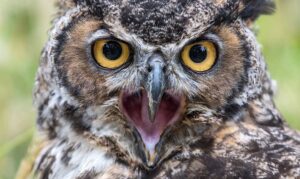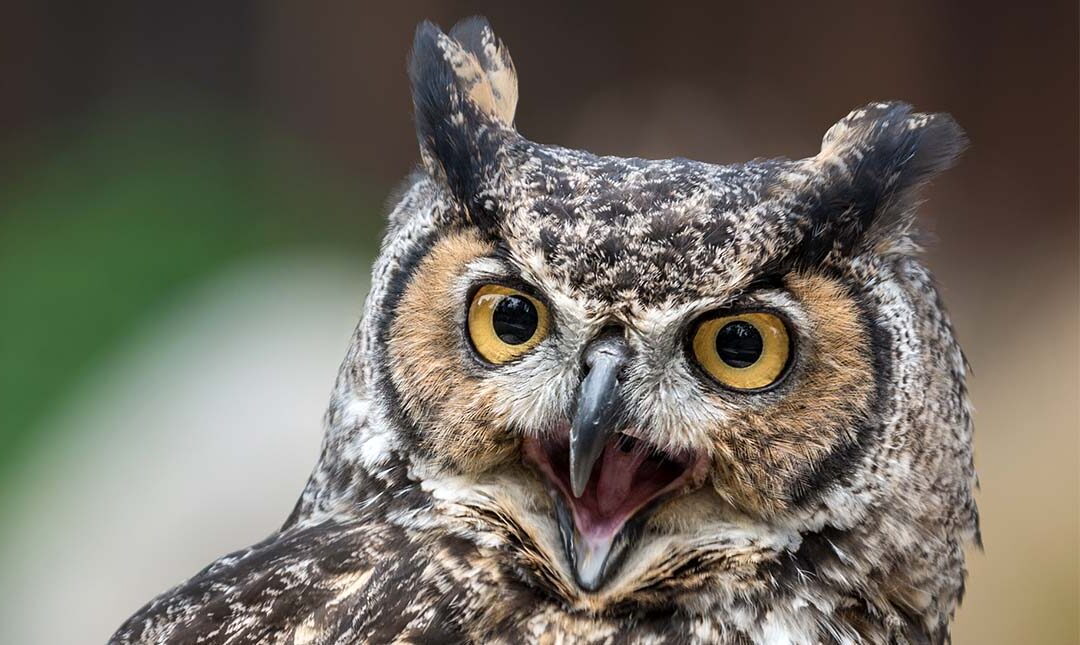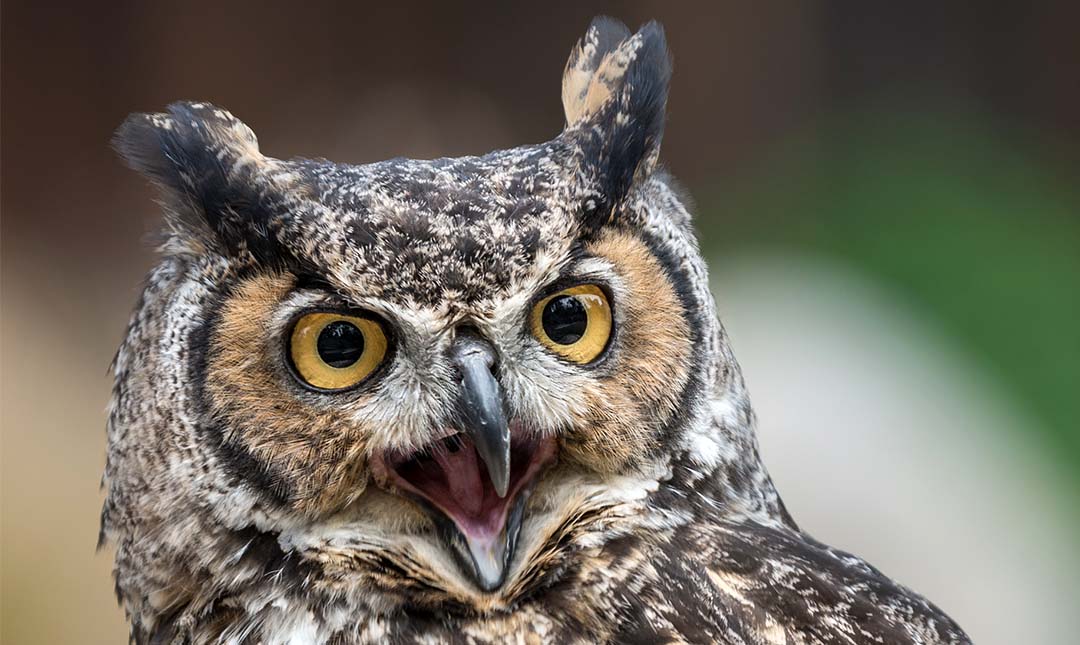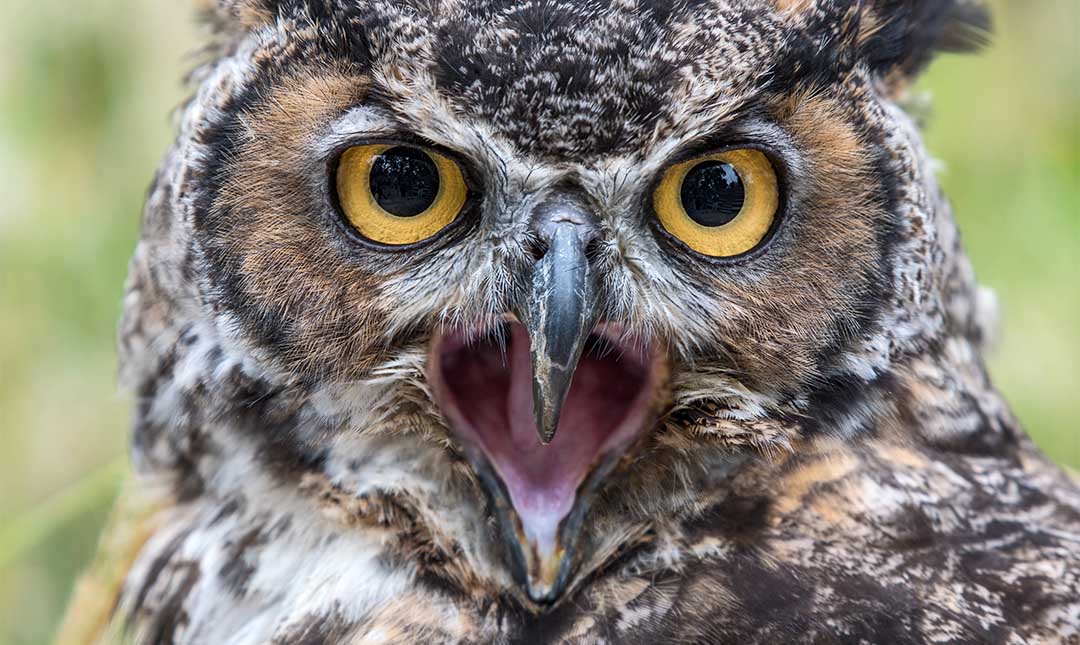About
The great horned owl is the most common owl in North America and can be found in many large backyard trees in Southern California. Although the “horns” look like ears, they are just feathers, the purpose of which is not known. Some say they serve as camouflage, helping the birds blend into trees during the day. Others think they may be used to communicate signals to other owls, but it is understood that they do not enhance hearing.
Owls have excellent hearing. Their ear openings are at different heights on each side of their skull, allowing them to triangulate sound and pinpoint the location of prey. Using sound, their brains create a three-dimensional map of their environment so they can find prey hiding under leaf litter. Their hearing is so acute, they can detect a mouse moving under a foot of snow. Because an owl’s eyes are so big, there is little room in the skull for eye muscles, and they cannot move their eyes. Instead, they use their flexible necks to rotate their heads to look in different directions while remaining perched in the same position. Great horned owls can turn their heads up to 270 degrees to see threats or prey located behind them. Owls hunt during the night. Their flight feathers have a downy fringe that allows them to fly silently. They play an important role in the environment by controlling rodent populations. Smaller prey is swallowed whole, but they can carry prey that weighs up to 30 pounds. Larger prey is torn apart with their sharp beaks. Indigestible parts such as bones, fur, teeth, and claws are coughed up in a pellet. Scientists dissect these pellets to see what is on the local menu.


Status
Great horned owls are listed as Least Concern by the International Union for Conservation of Nature (IUCN) due to their large habitation range and strong, steady population.
Habitat
These owls can be found throughout North America from Canada to Mexico and much of South America. They live in a wide variety of habitats including forests, shrubland, deserts, swamps, rocky areas, farmland, and urban areas.
Diet
Among the wide array of small to medium-sized animals that great horned owls eat are mice, rats, voles, rabbits, birds, amphibians, reptiles, fish, insects, and even skunks.
Physical Characteristics
Body length is about two feet, and weight is two to three-and-a-half pounds. Like most birds of prey, females are slightly larger than males. Lifespan in the wild is about 12 years. In human care, it can be 25 years or more.
LOCATION WITHIN THE ZOO
You may see this bird take flight in the World of Birds Show.



